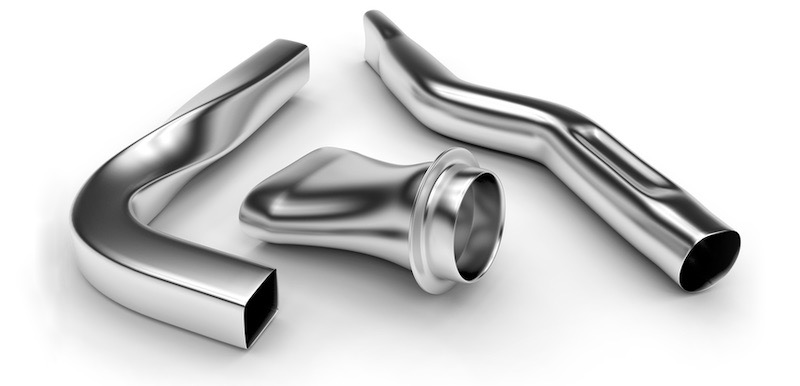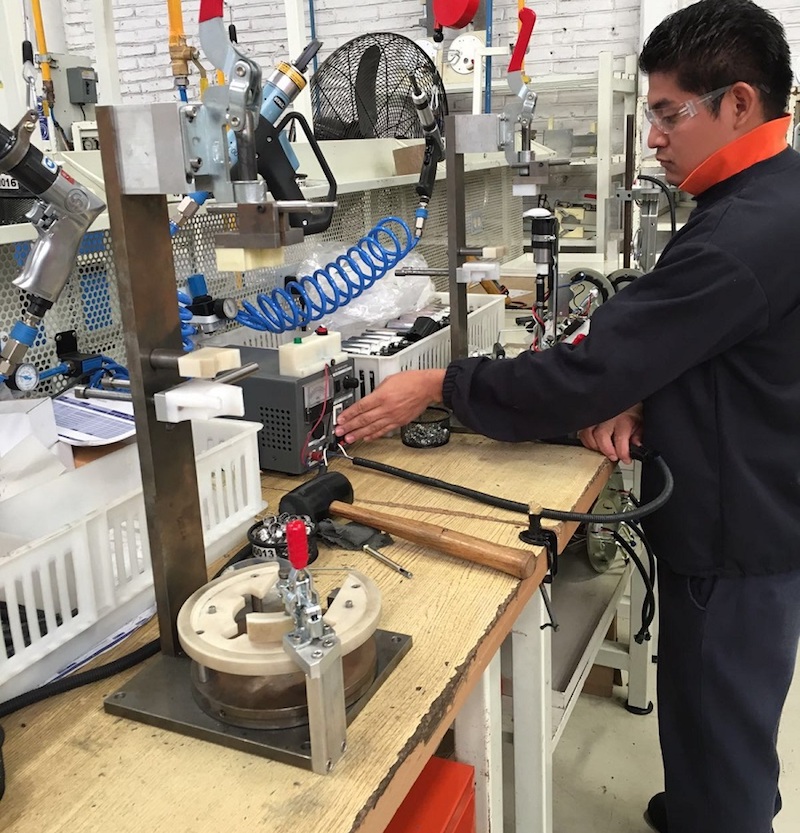Hydroforming vs Sheet Metal Stamping
Most people who are familiar with manufacturing know about sheet metal stamping. Hydroforming, on the other hand, is a unique process that is not well understood. Both methods have their place in manufacturing. In this article, we’ll cover the benefits of each method, and the differences between them.
Sheet Metal Stamping

Sheet metal stamping or pressing uses force in the range of 10 to 350 tons to shape a flat piece of sheet metal. This process is used to make large items like automotive body parts, metal panels for appliances, and smaller items.
The stamping process involves a machine that forces the sheet metal to fit a preset mold in one motion. This process does not involve heat but requires a lot of force. The sheet metal machines work with computer-aided design software to create precise results every time and can perform the following tasks:
- Smooth metal out or make it thinner
- Puncture metal
- Press the metal into a new shape
The Benefits Of Sheet Metal Stamping
The biggest benefit of sheet metal stamping is that it greatly speeds up the manufacturing process due to the following reasons:
- Sheet metal stamping is a cold-forming process, so there’s no need to wait for it to cool.
- The process can also put multiple holes into a piece of metal, eliminating the need to cut or drill holes in a secondary operation.
- The operation can create multiple complex bends in one stamping.
Hydroforming

Hydroforming uses high-pressure hydraulic fluid to shape malleable metal like aluminum or steel. It’s an ideal solution for complex designs that are difficult or impossible to make using traditional methods.
There are two common types of hydroforming:
- Tube hydroforming (with metal tubing)
- Sheet hydroforming (with sheet metal)
Both methods use a hydroforming press and a custom die or mold to shape the metal. In the case of tube hydroforming, it uses two dies instead of one to make parts with complex shapes like tubes with square openings and a corrugated section in the middle. Where sheet hydroforming can bend metal into similar shapes as sheet metal stamping, tube hydroforming can make parts like engine cradles, frame rails, and various supports.
The Benefits Of Hydroforming
Hydroforming offers many different benefits including:
- One-piece parts with no seams. Because hydroformed parts are one piece, they are stronger than parts made using other methods.
- Precise fitment for complex parts. Unlike other methods, hydroformed parts are created with precise dimensions.
- Less waste due to less material required to make parts. Additionally, there’s very little human error or loss from dented or damaged parts in the process.
- Lighter weight parts – hydroforming makes lighter weight parts that are still strong.
Intran Offers Both Sheet Metal Stamping And Tube Hydroforming

Intran was founded in 1969 and has over 50 years of experience in the manufacturing business. We have produced OE parts for major auto manufacturers, including American Motors, Stellantis (Chrysler), Nissan, and Volkswagen. We also serve the tier 1, tier 2, aftermarket, off-road, bus industry, and trucking automotive markets. Check out our capabilities online or contact us if you’d like more information.
